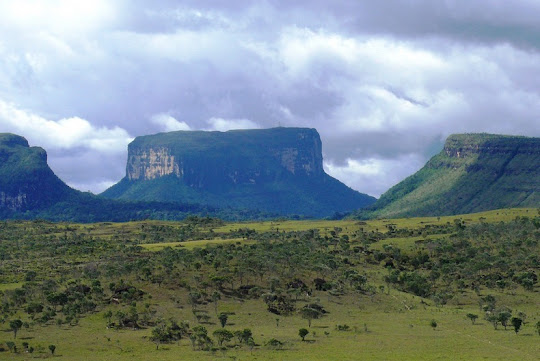Wadi us-Salaam, which literally means the Valley of Peace, is an Islamic cemetery located in the holy city of Najaf, Iraq. The cemetery covers an area of 1485.5 acres and contains millions of bodies, making it one of the strongest contender for the title of the largest graveyard on earth. Najaf itself is one of Iraq's biggest cities, with a population of nearly 600,000. But the adjoining city of the dead holds the remains of millions, stretching for up to 10km along the valley. Wadi Al-Salam cemetery is also the only cemetery in the world where the process of burial is still continuing to day since more than 1,400 years.
The graveyard holds importance in Shiite belief as it has been said that the souls of all faithful men and women shall be moved there, no matter where their bodies have been buried. Many prophets, kings, princes and Sultans lie in this cemetery including that of Prophet Hud, Prophet Saleh, and Ayatullah Sayyid Muhammad Baqir al-Sadr, as well as the remains of the prince of faithfuls, Ali Ibn Abi Talib.

Wadi Al-Salam cemetery contains graves built with baked bricks and plaster and it rises at different levels. Among the tombstones are the room-size family crypts built by the wealthy, often topped by domes. There are also underground burial vaults that can be get down by ladder. Graves from the 1930s and 1940s have their own style, soaring up 10 feet with rounded tops so that people would see them over their neighbors.
During the Iraq war in 2003, heavily-armed fighters of the Iraqi militia frequently used the cemetery to hide and ambush approaching enemy units. The Americans cannot get into the area, because it's full of winding lanes and underground mausoleums. The local gunmen who knew their way around would hit and then run and hide inside the many tombs.
When the rebels took refuge in the narrow spaces among the crowded tombs the Iraqi army ruthlessly bulldozed its way through the graves of its fellow soldiers. To this day, piles of wrecked cages from the graves remain stacked on the roadsides.
The violence that has overwhelmed Iraq since 2003 has lead to a massive expansion of the graveyard, swelling it by 40 percent to about three square miles. The cemetery has grown every year since 2004, first with the clashes against American forces, then the sectarian wars of 2006-2007 when Shiites and Sunnis were killing each other at a murderous rate, and finally in the 2008 battles with the Iraqi army. In recent years, though, its growth has slowed.




Source
READ MORE»
The graveyard holds importance in Shiite belief as it has been said that the souls of all faithful men and women shall be moved there, no matter where their bodies have been buried. Many prophets, kings, princes and Sultans lie in this cemetery including that of Prophet Hud, Prophet Saleh, and Ayatullah Sayyid Muhammad Baqir al-Sadr, as well as the remains of the prince of faithfuls, Ali Ibn Abi Talib.

Wadi Al-Salam cemetery contains graves built with baked bricks and plaster and it rises at different levels. Among the tombstones are the room-size family crypts built by the wealthy, often topped by domes. There are also underground burial vaults that can be get down by ladder. Graves from the 1930s and 1940s have their own style, soaring up 10 feet with rounded tops so that people would see them over their neighbors.
During the Iraq war in 2003, heavily-armed fighters of the Iraqi militia frequently used the cemetery to hide and ambush approaching enemy units. The Americans cannot get into the area, because it's full of winding lanes and underground mausoleums. The local gunmen who knew their way around would hit and then run and hide inside the many tombs.
When the rebels took refuge in the narrow spaces among the crowded tombs the Iraqi army ruthlessly bulldozed its way through the graves of its fellow soldiers. To this day, piles of wrecked cages from the graves remain stacked on the roadsides.
The violence that has overwhelmed Iraq since 2003 has lead to a massive expansion of the graveyard, swelling it by 40 percent to about three square miles. The cemetery has grown every year since 2004, first with the clashes against American forces, then the sectarian wars of 2006-2007 when Shiites and Sunnis were killing each other at a murderous rate, and finally in the 2008 battles with the Iraqi army. In recent years, though, its growth has slowed.




Source


























































